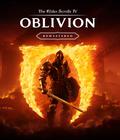Genre: Role-Playing
Publisher: 2K Games
Developer: Bethesda Softworks
Release Date: Christmas 2005
The Elder Scrolls series is celebrating its tenth anniversary. Considering the fact that this latest installment took over three years to make, that's not all that surprising. Bethesda's design philosophy is to build each game from the ground up, and for this ten-year edition, they're pulling out all the stops.
The first thing everyone is going to notice is just how flat-out gorgeous this game looks. Seriously, this is some near virtual-reality stuff. The game starts you off in a prison, where everything looks amazingly solid; the solidity of the stones and the gleaming of metal will instantly grab your attention. Every surface you look at, from the edge of your sword to the thick prison walls, has multiple textures.
Afterwards, the demonstration took us out to the forest, and it was some of the most realistic looking computer-generated foliage I'd ever seen. These were not prefabricated textures made to bear a passing resemblance to patches of grass like in so many golfing games. These were collections of individual blades of grass, and high-resolution trees with individual leaves to boot. It all looked, and pardon the pun, natural.
Sure, right now it all runs at less than thirty frames per second, but hey, it's early code. Smile, nod, and look at the pretty pictures; please note that NPCs' skin have the same texture as the skin on your hand. There you go. It all runs in high-definition, too, naturally.
Bethesda's also gone all out with the physics, models and algorithms. When a rope is swung, or when a bucket is tagged with an arrow, it behaves naturally, and will swing until its momentum is gone, thanks to the Havok engine. Individual blades of grass in the forest all sway under the wind, to each strand's own unique rhythm. Bethesda told us that they actually sent out teams to study environments similar to the ones being used in the game, and how each particular object in them will move in different situations. It's easy to see that the data's been put to good use.
The main theme of Oblivion is to create a simulated world that thinks for itself, instead of being told what to do by anyone besides the player. Not only are the inanimate objects subject to complex algorithms and decision trees, but the characters themselves that you happen across in the world are of an even higher breed. Powered by what the developers call Radiant AI, all NPC characters are unscripted. They're instead run through a series of decisions instances and default actions which allow them to keep a 24-hour schedule, talk to other NPCs (in fact, overhearing NPCs' conversations is an integral part of discovering new quests), talk to you, and react to outside stimuli.
It's an ambitious goal, and for the most part it works (there was an amusing instance where a woman torched her dog with a fire spell because he was barking too loud and wouldn't let her sleep, but we'll keep that little incident between us). The characters also behave naturally, and you wouldn't know that their actions weren't scripted. They're also backed by more than fifty hours of voice acting, including a typically great performance by Patrick Stewart as the Emperor, which take up half of the space of the game's DVD.
As with past Elder Scrolls games, you can create almost any kind of character you want, from spellslingers to deadly snipers to thieves and so on. There's no experience system in Oblivion; instead, you learn your skills by using them. If you want to be a great archer or mage or what-have-you, just use those talents and you'll gradually improve. It allows for an organic sort of character generation and design, which we like to see in our games. You can hone those skills against the inhabitants of over two hundred unique dungeons, each one of which has been handcrafted. There's no random dungeon generation here.
The combat system in Elder Scrolls games is one that people either hate or love. Bethesda hopes to rectify this with its new streamlined combat system. The player is free to switch between first person and third person view depending on the situation. Along with this, weapons can be switched (from melee-types to ranged arrow types, for example) and spells can be cast all in the same perspective, and all with a few simple taps of your assigned buttons. In truth, combat can be made menu-less if you exercise a little ingenuity, and therefore it'll be integrated seamlessly into the rest of the gameplay.
There are times when combat is not the best course of action, however. The game also incorporates stealth sequences into some of its quests, such as a cool bit where you get to sneak into some goblins' lair with your trusty bow.
The Elder Scrolls IV:Oblivion is shaping up to be a well-crafted game with a lot of love behind it. Its elements and features can make even people raised strictly on Japanese console RPGs (i.e. Geson – the mgmt.) sit up and take notice. PC and console gamers alike will be able to take part in the goodness, as the game is being simultaneously developed for the Xbox 360. This is the first good reason to pick one up.
More articles about The Elder Scrolls IV: Oblivion











 The Elder Scrolls IV: Oblivion Remastered is an RPG with lush visuals, expansive worlds and limitless character customization combine with unprecedented levels of player freedom and NPC interaction.
The Elder Scrolls IV: Oblivion Remastered is an RPG with lush visuals, expansive worlds and limitless character customization combine with unprecedented levels of player freedom and NPC interaction.

















